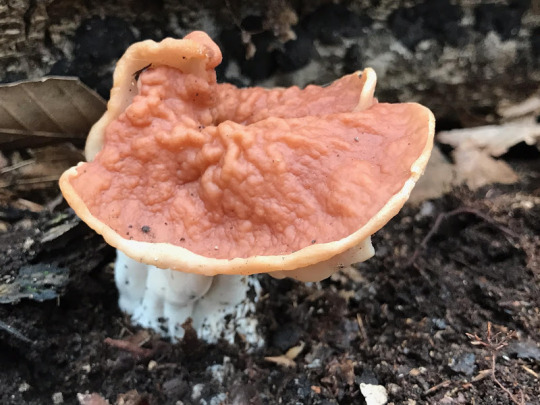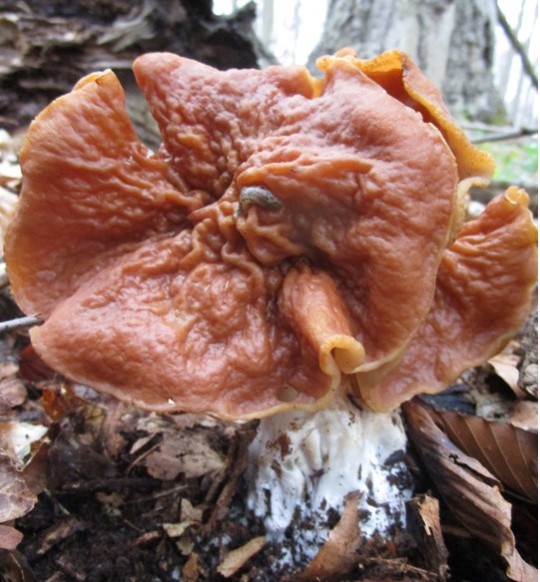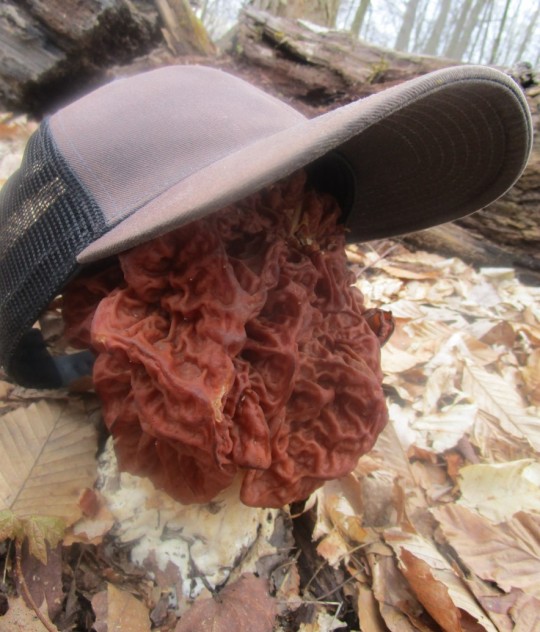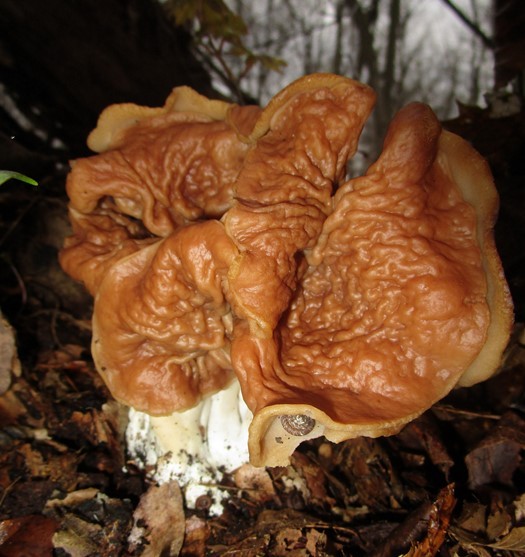#gyromitra caroliniana
Text
brains...

It might look like zombie bait, but it’s the big read false morel mushroom, Gyromitra caroliniana. These brainy growths signal warming soils. The appearance of true morels is not far off. Watch out, the big red false morel is considered poisonous. Learn more about them here.
Mid Missouri, my secret spot, 2014.
#big red false morel#false morel#gyromitra caroliniana#forest floor#spring#forestcore#naturecore#missouri nature#fungus#mushroom#fungi#fantastic fungi#nature photography#original photographers
25 notes
·
View notes
Text


Gyromitra californica, Gyromitra caroliniana, Gyromitra fastigiata, Gyromitra gigas, Verpa bohemica, Helvella sp.,Destroying Angel (Amanita ocreata), Fool's mushroom (Amanita verna) European Destroying Angel (Amanita virosa), Death Angel (Amanita bisporigera), Deadly Conocybe (Conocybe filaris), Deadly Parasol (Lepiota josserandii), Deadly Galerina (Galerina autumnalis), Flat-topped Agaricus (Agaricus praeclaresquamosus), Yellow Stainer (Agaricus xanthodermus), Mock Meadow Mushroom (Agaricus californicus), Felt-ringed Agaricus (Agaricus hondensis), Satan's Boletus (Boletus satanas), Red-pored boletus (Boletus pulcherrimus), Slender red-pored Boletus (Boletus erythropus), Green-spored Parasol (Chlorophyllum molybdites), Emetic russula (Russula emetic), Fragrant russula (Russula fragrantissima), False Chanterelle (Hygrophoropsis aurantiaca), Sulfur Tuft (Hypholoma fasciculare), Lurid Boletus (Boletus luridus), Jack O'Lantern Mushroom (Omphalotus olivascens), Sweat Mushroom (Clitocybe dealbata), Conic Fiberhead Mushroom (Inocybe fastigiata), Fluff fiberhead mushroom (Inocybe lanuginose), Inky Cap (Coprinus atramentarius), Coprinus variegates, Fly Amanita (Amanita muscaria), Panther Amanita (Amanita pantherina), Gemmed Amanita (Amanita gemmata), Potent Psilocybe, Wavy Cap (Psilocybe cyanescens), Magic Mushroom (Psilocybe cubensis), Azur Cap (Psilocybe azurescens), Liberty Cap (Psilocybe semilanceata), Panaeolus subbalteatus, Panaeolus cyanscens, Black Trumpet, Truffle, Button, Cauliflower mushroom, Turkeytail, Charcoal burner, Chicken of the Woods, Common Ink Cap....
[He just...]
[He just keeps going...]
@cloudbattrolls
11 notes
·
View notes
Photo







Gyromitra
Late March through April is a distinct season for mushrooming in Ohio.
Winter leaves most fungi lovers thirsty for spring, even if we are fungling year round.
I usually see the first hints around the last week in March. Scarlet elf cup, devil’s urn, and hexagonal polypore appear, and the winter season is fading away.
Morel season is here.
I like morels. I have decent luck finding them and have some secret spots. I wait patiently for the right signs, and watch the forests transform.
Morel season isn’t long lived. Once I start finding them, the season only has a few weeks to go. Yet this is the time of year when my usually obscure fascination with mushrooms gets a crowd of company.
Morel hunters are everywhere late April through early May. I’ll likely see them about if I’m wandering more popular destinations. And most them know the difference between “true morels” and “false morels.”
I try not to get elitist during morel season, but this stuff about so called false morels bothers me. Firstly, mushrooms aren’t here just so you can throw them in a pan, cook em up, and eat. I find spring tutorials constantly featuring some morel hunter who warns viewers about the dangerous “beefsteak.” Gyromitra species are lumped into one and described only in how they compare to morels. They are poison, and that’s about it.
Gyromitra is a diverse genus with various species. Just like morels, most are safe to eat when cooked. Mushroomers can enjoy eating them if they put a little effort into identifying them to species and knowing which ones truly contain the toxin Gyromitrin and which don’t.
Facebook’s False Morels Demystified is a terrific group with plenty of knowledgeable members.
Through morel season, I wonder why some mushrooms soak up all the attention, leaving the rest literally left in the dirt.
I don’t eat Gyromitra esculenta, one of the risky species. Some people say you can par boil the toxins out. I don’t know. I have eaten other Gyromitra species though. They were good, but so what?
Edibility is just a tiny part of the enjoyability of mushrooms.
I loved Gyromitra the first time I came across a huge red G. caroliniana, long before I started eating them.
I was searching April’s brushless forests for morels when I found Gyromitra instead. I totally forgot about the morels. I already knew at least a little about what I was looking at. “Not a morel, don’t eat!” But it was far more interesting than I’d been led to think.
Since then, I’ve been fascinated by them. I took my time getting to know them.
In early spring, flowers have only sparsely bloomed, and ferns are still little curled up baby octopus tentacles.
It’s fun to look for Gyromitra in leaf litter, whether you eat them or not. They come up before morels, and they seem to be more plentiful.
The different species are a challenge to learn, but not frustratingly difficult. There’s a special feeling that comes from spotting one and knowing right off it’s brunea and not korfii. Once you get the hang of it, most will be obvious.
Identification and simple appreciation are what makes mushrooming fun. Good eating is just a bonus.
Birdwatchers aren’t constantly asking themselves “can I eat it? Butter and garlic?” So why should mushroomers?
I think Gyromitras are gorgeous, fascinating mushrooms. They deserve more than an offhanded “they’re not morels.”
Take a close look.
Don’t you think so too?
7 notes
·
View notes
Photo

Gyromitra Caroliniana, a large, attractive fungi, commonly known as the Carolina False Morel or Big Red. It is found in hardwood forests of the southeastern United States, where it fruits in early spring soon after snow melt.
mushroomthejournal.com
19 notes
·
View notes